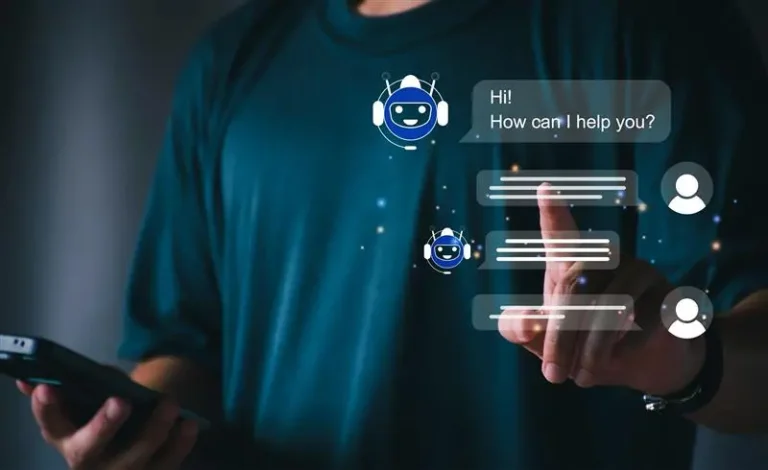How AI and Automation Are Changing Business Website Development

Introduction
In today’s rapidly changing digital landscape, Artificial Intelligence (AI) and automation are more than just buzzwords; they are revolutionizing how businesses create, launch, and enhance their websites. Their impact spans areas such as code generation, design processes, testing, personalization, and accessibility. For businesses collaborating with innovative companies like OneData Software Solutions, these advancements lead to faster delivery, smarter design choices, and increased return on investment (ROI).
Let’s examine how AI and automation are transforming business website development and why a modern site blends human creativity with technological precision.
1. AI-Powered Code Generation: From Idea to Launch
Developers increasingly depend on AI tools like GitHub Copilot and OpenAI Codex to produce and finish code snippets. These smart assistants understand natural language prompts, helping turn ideas into working code efficiently.
- Speed & Efficiency: Developers using AI pair programmers often report a boost in productivity. In one test, tasks were completed nearly 56% faster with AI help.
- Creative Focus: By handling repetitive coding, teams can focus on user experience, architecture planning, and business logic.
- But with Caution: Research shows that despite perceived speed improvements, developers may be slower with AI assistance, overestimating productivity while taking about 19% longer to finish tasks.
2. Automation in Design and UI/UX Development
AI isn’t just for coding; it’s redefining website design:
- Smart Design Tools: Platforms like Uizard convert sketches into polished UI layouts. AI tools suggest visual enhancements, color schemes, and responsive designs automatically.
- Generative Design: Tools such as Adobe Sensei and Figma’s AI plugins recommend layout tweaks based on visual trends and user expectations.
Businesses gain from more consistent design and faster prototyping but still rely on human oversight to ensure brand consistency and user empathy.
3. AI-Enhanced Testing, Debugging & Quality Assurance
Manually testing code takes a lot of time. Automation changes that:
- Automated Bug Detection: AI tools can spot errors, suggest fixes, and even create test cases.
- Predictive Maintenance: AI monitors site performance and can flag issues before users encounter them.
- Accessibility Assistance: Tools like CodeA11y help developers make code accessible, suggesting improvements for compliance and usability.
This mix leads to more reliable and user-friendly websites.
4. Personalization and Adaptive Websites
AI-driven design enables websites to adapt instantly to user behavior:
- Adaptive Layouts: Websites use AI to change layout, content, or structure based on how users interact, sometimes adjusting navigation or content blocks dynamically.
- Hyper-Personalized UX: Predictive analytics and AI insights help create personalized experiences from product suggestions to targeted messaging at scale. This approach keeps users engaged and boosts conversions by delivering relevant, intuitive, and thoughtful experiences.
5. No-Code and AI-Driven Website Builders
The rise of no-code platforms removes entry barriers for businesses:
- Conversational Web Creation: Tools like Base44 allow users to describe app needs in plain language. AI then builds the front-end, back-end, and infrastructure automatically.
- Accessible Development: Platforms like Div-idy generate entire front-end experiences HTML, CSS, JS via AI-guided prompts, making development possible even for non-coders.
These solutions enable quick MVP launches and democratize website creation though complex custom features still need experienced developers.
6. AI Agents & Next-Generation Agentic Web Architecture
AI is changing how systems work with web pages:
- Agent-Ready Webspaces: The webMCP protocol embeds metadata into pages, which helps AI agents interact more smoothly, cutting processing overhead by over 67%.
- Human-AI Collaboration: This creates websites where AI manages tasks like content retrieval or navigation logic while humans focus on design and strategy.
This architecture paves the way for smarter, more responsive digital experiences.
7. Why Human Oversight Still Matters
AI tools can generate sites or code but humans shape vision and quality:
- Creative Direction: Aesthetics, brand consistency, and user empathy are still human strengths.
- Quality Assurance: Humans are key to catching subtle issues and ensuring clear logic.
- Skill Evolution: Experts recommend developers focus on requirements, testing, security, and communication, as AI handles routine tasks.
8. Strategic Integration: What OneData Offers
At OneData Software Solutions, we use AI and automation wisely not to replace humans, but to support them:
Stage | AI & Automation Role | OneData’s Expert Role |
Prototyping | AI-generated UI sketches & layout options | Refine design for brand, usability, and accessibility |
Development | AI-assisted code generation & debugging | Build secure, performant, maintainable custom code |
Testing | Automated testing & performance monitoring | QA, logic validation, user scenario testing |
Maintenance | Performance monitoring & anomaly detection | Strategic updates, UX adjustments, and feature roadmap |
Personalization | Adaptive layout & recommendation algorithms | Data-driven user journeys, UX personalization |
By leveraging the strengths of AI alongside domain expertise, we develop modern, efficient, and scalable websites that are customized for achieving business results.
Conclusion
AI and automation are bringing about a new era in website development, where speed, customization, and adaptability are the norms. Today’s tools can generate layouts, code, and even entire pages in just minutes. However, without human oversight, creativity, and strategic thinking, these tools cannot create websites that are meaningful and aligned with a brand’s identity.
For businesses, the future lies in collaboration: using AI to enhance productivity while relying on humans for vision. For partners like OneData, the goal is to create digital experiences that are both intelligent and engaging.
Let’s work together to build smart, creative, and impactful websites!
FAQs
1. How is AI used in website development?
AI is used in website development for code generation, automated testing, smart UI design, personalization, and even accessibility improvements. It helps speed up workflows while enhancing user experience.
2. Can automation completely replace developers in web development?
No, automation cannot fully replace developers. While AI and automation handle repetitive tasks and generate code quickly, human expertise is still essential for strategy, creativity, brand alignment, and quality assurance.
3. What are the benefits of AI-powered website development for businesses?
AI-powered website development helps businesses build websites faster, reduce errors, improve user experience, enable personalization, and optimize performance for better engagement and ROI.
4. How does AI improve website performance and testing?
AI-powered tools automatically detect bugs, generate test cases, and predict issues before they affect users. They also optimize site speed, responsiveness, and accessibility for improved performance.
5. Why should businesses choose OneData for AI-driven website development?
OneData combines AI and automation with expert strategy, design, and development to create custom websites that are scalable, secure, and aligned with business goals.
Table of content
- Introduction
- 1. AI-Powered Code Generation: From Idea to Launch
- 2. Automation in Design and UI/UX Development
- 3. AI-Enhanced Testing, Debugging & Quality Assurance
- 4. Personalization and Adaptive Websites
- 5. No-Code and AI-Driven Website Builders
- 6. AI Agents & Next-Generation Agentic Web Architecture
- 7. Why Human Oversight Still Matters
- 8. Strategic Integration: What OneData Offers
- Conclusion
- FAQs










